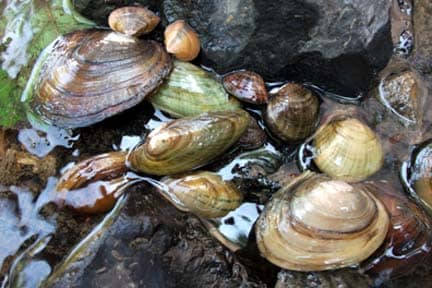
Freshwater mussels are work horses. Just one of these little filter feeders does its part to filter between 10-20 gallons of water per day. A healthy bed of freshwater mussels, in a reach of river the length of two football fields, can filter over half a million gallons of water every single day.
Despite their might, mussels are actually one of the most imperiled groups of animals in North America with 70% of mussel species listed as vulnerable, threatened or endangered. The southeastern U.S. has the most diverse group of mussels in the world, but severe habitat destruction, water pollution, climate change, damming, the introduction of invasive species, a decline in host fishes and over exploitation of water resources, most commonly by agriculture, continue to reduce their numbers.
One rare mussel that may inhabit the Tye River drainage of central Virginia is the green floater, Lasmigona subviridis. As part of the work THI is doing to restore the streams of the Tye River Mitigation Bank, we’re conducting a survey this summer to check for the presence of green floaters. This small mussel is most often found in is streams and rivers with a gravel and sand bottom, and slow pools and eddies. It is intolerant of strong currents and requires good water quality. The green floater is very rare – ranked G3 (Global – very rare or vulnerable] / S2 Subnational – imperiled status).
If green floaters are discovered within the Tye River Mitigation Bank, the Bank will protect the mussels and monitor their populations regularly. If green floaters are not found, we know the restoration work being done on the Bank’s streams and rivers will improve water quality, hopefully to the point the green floaters may eventually appear, carried by the fishes that serve as hosts to tiny mussel larvae.
